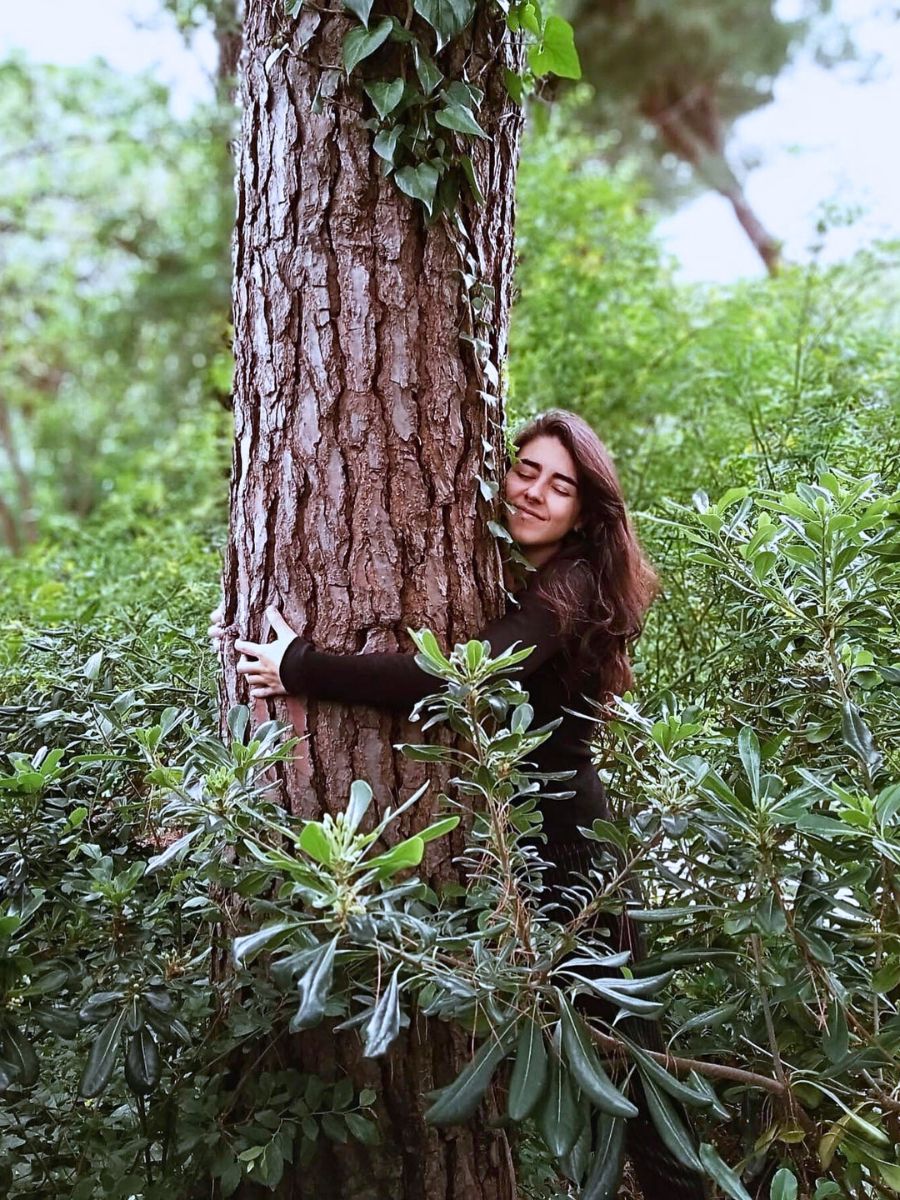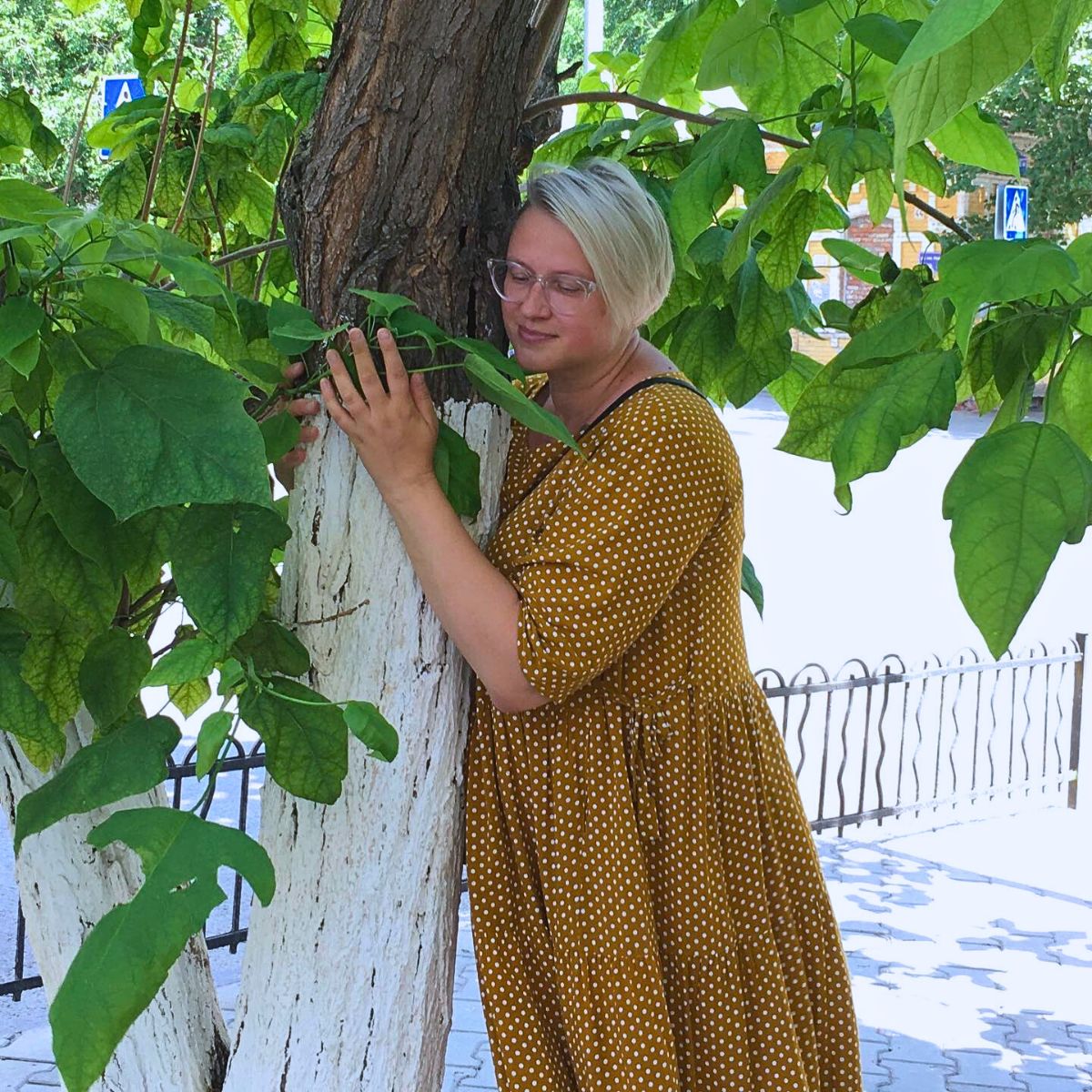That nature possesses the innate power to nurture human well-being is beyond doubt. In its different forms, nature presents innumerable ways through which people can benefit from its therapeutic and restorative capabilities. And, among the various practices available, hugging trees—or simply tree-hugging—is an ideal way.
Tree-hugging is a practice that has seen growing popularity in recent years. It is more than just a quirky trend. It is not just an influential tool for environmental activism. It is a pathway to improved mental and physical health. In tree-hugging, we do not just benefit our well-being, but also protect the planet. Here’s how.
The Roots of Tree-Hugging
The idea of tree-hugging has its origins in ancient cultures. Indigenous communities across the world have had great reverence for trees for a long time. They always recognized trees’ important role in sustaining life and personifying the ideal of spiritual wisdom.

Photo by @ta_co_czuje_wiecej
Tree-hugging, in essence, has deep cultural, spiritual, and environmental inferences that can, be traced all through history. While the specific term ‘tree-hugging’ may seem somewhat modern, the reverence for trees and the belief in their sacredness can be traced in age-old traditions around the world.
In ancient Celtic and pagan beliefs, for example, trees were considered sacred and symbolized the interconnectedness of all living beings. Similarly, in many other indigenous cultures worldwide, they held deeper spiritual significance and were often revered as ancestors or guardians. Native American and First Nations tribes have, for instance, long recognized the characteristic value of trees and their vital role in sustaining life. Even now, they consider trees as living entities with wisdom and spirits, deserving of respect and protection.

In Eastern philosophies and spiritual traditions, trees held—and still hold—a significant place. Hinduism, for instance, has long considered the Banyan tree sacred while Buddhists have found solace under the Bodhi tree (Ficus religiosa), a sacred fig tree with religious significance, under whose shade Buddha attained enlightenment. In many traditions, therefore, trees were, and still continue to be perceived as keepers of sacred knowledge, protectors of the land, and channels to divinity. Embracing one, was not merely a gesture of affection but a ritualistic show of respect, a search for guidance, or a communion with the natural world, and, in recent times, a demonstration of conservational ideals.

One of the most well-known instances of tree-hugging was a form of protest that took place in the 18th century in Rajasthan, northern India, where a group of more than 350 individuals led by Amrita Devi, hugged trees in an act of resistance against deforestation. They were members of Bishnoi Hinduism, who have great reverence for the Khejri tree (Prosopis cineraria) which they considered a vital life force among the desert communities. These Bishnoi men and women physically clung to the trees in their village to stop them from being cut down and used to build a palace. Although foresters killed them, their martyrdom led to a royal decree outlawing the chopping down of trees in Bishnoi villages. Their efforts, therefore, saved many trees and sparked a movement that still inspires environmental activism today.

Modern-Day Practice of Tree-Hugging
However, tree-hugging as we know it today gained prominence during the environmental movements of the late 20th century. An iconic and influential movement in this regard was the Chipko Movement, which originated in Chamoli's hilly Uttar Pradesh region in Uttarakhand, India. The Chipko Movement—a name which translates to ‘hug’ or ‘cling’ in Hindi—was a non-violent protest against commercial logging activities. It advocated for the protection of trees and brought attention to the interwoven relationship between communities and their local ecosystems. Villagers, predominantly women, hugged the trees—as a symbolic gesture of love, and protection—in a resistance against the destruction of their natural environment.

Another modern show of the resurgence of tree-hugging can be traced back to the environmental movement of the 1960s and 70s. As awareness of deforestation and environmental degradation grew, activists sought creative ways to show the world the importance of protecting trees. Accordingly, the iconic image of environmentalist Julia ‘Butterfly’ Hill, who in 1997 lived in a giant redwood tree for two years to prevent its logging, became another symbol of resistance against deforestation. It showed the deep-rooted connection that humans can have with trees; so deep they’d risk it all to save these trees!

Photo by Andy Black
The Benefits of Tree Hugging for Humans
Not being just a symbolic gesture, tree-hugging offers so many other benefits for humans. It, for example, improves mental health. Hugging trees has been shown to reduce stress, improve mood, and promote relaxation. Just being outside in nature has a positive impact on mental health. And hugging a tree in the process takes this connection to the next level. The Biophilia Hypothesis suggests that humans have an emotional connection to environments inhabited by plants and other forms of life, and cuddling trees strengthens this bond.

Research, also, shows that spending time around trees and in nature can lower blood pressure, improve immunity, and accelerate recovery from illness or trauma. Hugging trees has, in the same way, been found to increase the levels of oxytocin, the hormone responsible for emotional bonding and feelings of well-being, calmness, and trust. Trees, likewise, remind people of their place in nature. They help people feel more attached to one another and the natural world. Hugging trees, therefore, increases this connection with nature, which has a positive impact on physical, psychological, and emotional well-being.

Photo by @oliver_beautifulworld
Still, yet, trees provide people with oxygen, shade, food, medicines, and beauty. Where words of appreciation cannot be articulated or understood, the simple act of hugging the trees helps in showing and appreciating them and telling the beauty of life and its dependence on nature. And more than that, tree-hugging meditation is an effective form of mindfulness. It enhances awareness and brings one into the present moment. Hugging a tree can, therefore, be a grounding and centering practice that helps one feel stronger, and at a place where they are supported.
Why You Need to Embrace Trees and Hug Them
Deforestation and environmental degradation are, in this day and age, a growing concern. Tree-hugging is, as a result, an effective symbol of environmental activism and reverence for nature. However, at a more personal level, why should we hug trees more often? Well, the reasons are many.

Tree-hugging, as a form of nature connection can provide immediate stress relief by promoting relaxation and mindfulness. Research has, after all, shown that spending time in nature can significantly lower stress levels, reduce anxiety, and improve mood. Engaging in nature-based activities has, likewise, been linked to a lower risk of depression, enhanced self-esteem, and increased life satisfaction. And tree-hugging can be incorporated in this case as well.
In addition, there have been studies that have found that exposure to phytoncides, which are organic compounds released by trees, has numerous benefits. But most importantly, they can enhance the human immune response by increasing the production of natural killer (NK) cells. These cells play a crucial role in fighting off infections and cancerous cells. Do you now know why forest bathing is good for you? You need not be told more!

Photo by Yick Chong Lam
You’ve, definitely, heard of grounding, and all its benefits. Well, tree-hugging can help individuals reconnect with their bodies and the present moment by supporting grounding and centering. Focusing on the sensation of a tree's bark against the skin helps one anchor oneself in the here and now. This reduces the feelings of being overwhelmed and disconnected. Also, when you regularly hug a tree, you have an opportunity to gain deeper personal insights and spiritual growth. This comes about by opening oneself to the life force of the tree, which in turn helps one gain a greater understanding of their inner wisdom and potential.
Then, there’s the environmental stewardship part. Regularly engaging in tree-hugging promotes an enhanced appreciation for the natural world and stimulates a drive towards environmental conservation. This deeper connection with trees means one is more likely to take action to protect them; just the way the Bishnois, the Chipko Movement, and later Julia 'Butterfly' Hill, did years ago.

And what's more, hugging trees is just a fun and easy activity that anyone can do, whenever they can. Plus, it presents a perfect opportunity to make new friends while reconnecting with nature. So, go out there and hug a tree! You’ll feel so much better thereafter.
Feature image by Yick Chong Lam.










